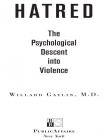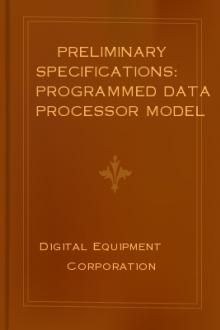Hatred, Willard Gaylin [best ebook for manga txt] 📗

- Author: Willard Gaylin
Book online «Hatred, Willard Gaylin [best ebook for manga txt] 📗». Author Willard Gaylin
Modeling and Identification
Human behavior is not merely a struggle for survival, a battle to avoid destruction. There are powerful positive motivating forces that serve other interests beyond survival, like ideals and pride. To understand both the positive and negative influences on character development, one must understand identification and modeling. Both shape behavior but do it through different pathways. In a discussion of hatred, this distinction is crucial. Heroes set standards for the rest of the population. They are models to emulate. One martyr will lead to another.
Identification—the process of fusing one’s personality with a person or a group—determines our essential character traits, how loving and compassionate or resentful and paranoid we may eventually become as adults. Identification is central in deciding both whom we choose to love and whom we decide to hate and how inclusive each group will be.
Modeling refers to the child’s consciously attempted mimicry of his parents, and later of other idealized figures, in a conscious effort to conform to their standards and gain their approval. We are most likely to choose as models those who seem most powerful, and to the young child it is always the parent. That will change with adolescence, as every parent knows only too well. In a strictly behaviorist model, the child responds to rewards and punishments. Some of these are explicitly stated by the parents. But parents are generally unaware of the degree to which tacit clues will equally be followed by the child. Parental facial expressions and their body language will influence the child’s behavior more than specific injunctions. When an annoyed parent says, “Do what you want,” she is really saying, “Do what I want, which I have clearly indicated in one way or another.” Even the child’s syntax, tone, inflections, and speech patterns are borrowed from the parents, which is why family members tend to resemble each other in more ways than just the physical.
What most likely happens is that the typical child randomly tests the parents with a variety of behaviors intended to gain their love and approval. If through trial and error the child finds that being cute, charming, and cuddly evokes a positive response or brings forgiveness for transgressions, he will use those methods more and more. If, on the other hand, the parent responds to the ingratiating behavior with distaste because he cannot tolerate it, the child will find an alternative path to approval. The way to this parent’s heart may be through self-sufficiency—being a good boy, with everything that implies.
These two types of children will grow up to be different. One will see performance and achievement rather than ingratiation as the primary means for gaining approval. He will see action rather than accommodation as the way to approval. Each will tend more and more to use the successful methods. Children are masters at reading their parents’ moods. They have to be. Their lives—at least in their distorted perceptions—depend on it. But a child operates in other ways that are independent of trial and error. A child shapes conduct through mimicry and imitation, using the devices of both modeling and identification.
Fortunately, or unfortunately, we are not limited in our modeling to the parental figures alone. Older siblings often serve as models. In later life we can identify with teachers, mentors, friends, and public heroes. One’s identity is therefore an amalgam. It will involve conscious modeling of these icons, where certain traits are scrupulously copied and others just as avidly eschewed. But we may not be as much in control as we would like to believe. We may discover ourselves in adult life—often to our chagrin—behaving precisely the way our parents behaved, and in fashions that previously embarrassed or humiliated us.
Conscious modeling is generally most effective only in less important aspects of life. We can reject the European or Midwestern cadences with which we were raised, substituting the tonier Eastern accents of our classmates or teachers, or for that matter, the ghetto-speak that seems cooler. We can tailor our clothes and cut our hair to whatever pattern is de rigeur for our generation. But most of what drives behavior in crucial areas will have been established earlier in life through less voluntary and rational means.
Modeling has minimal influence compared with the power of the automatic identification that goes on willy-nilly even when the child assumes he is rejecting the parental directives. Identification is a peculiar process. It operates on an unconscious and involuntary basis. A mother is likely to influence the design of her child through those areas of her behavior over which she, herself, has little or no conscious control. In governing the nature of her offspring, what she is will be more a determinant than what she wants. This concept of identification is so powerful that it mystifies parents, who are unaware of the distinctions between their instructions and their actions. A little girl will often behave as her mother wants her to behave out of fear of her mother or love for her. But that same little girl will behave like her mother—even if that may not be the way the mother wants her to behave—out of a strong and almost automatic process of identification. When a girl starts talking like her mother, employing her inflections and tonality, when she starts demonstrating the same walk and body language, it is not a conscious act of imitation. It just happens. It is a reflection of identification.
Identification is the most powerful of the behavior-determining forces.51 Most things are learned piecemeal, one at a time, through trial and error. With identification we learn automatically and with a “wholesale” adoption of the forms, habits, and even the values of the parents and the culture that shaped them. Through identification, we psychologically swallow up the parent—called “introjection” in psychoanalysis—and fuse his or her identity with our own. In this way we adopt behavioral patterns in big, indiscriminate blocks by incorporating the





Comments (0)